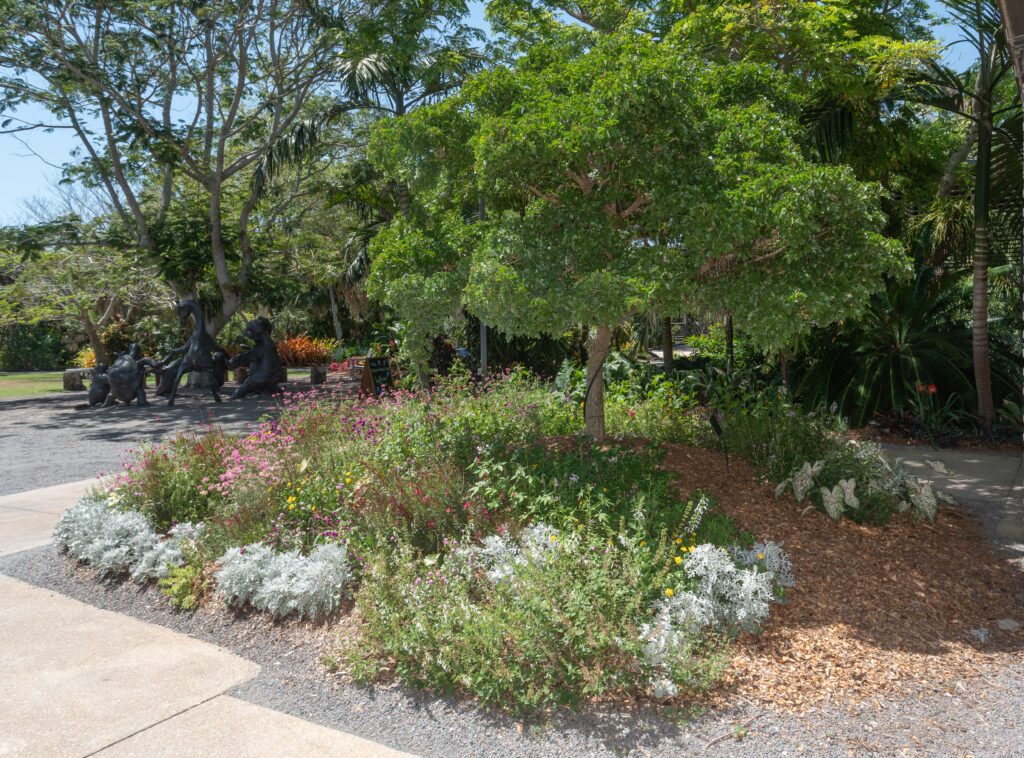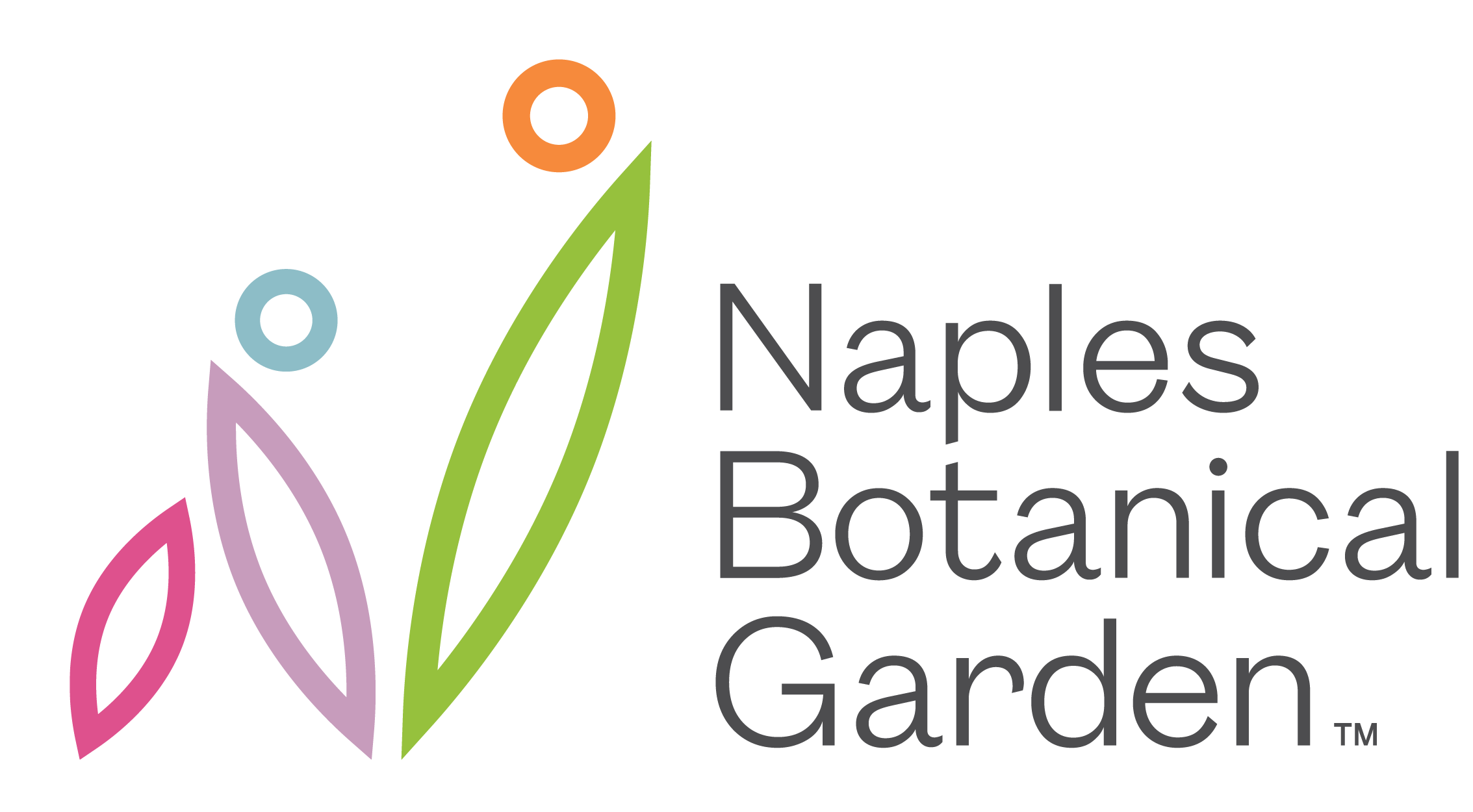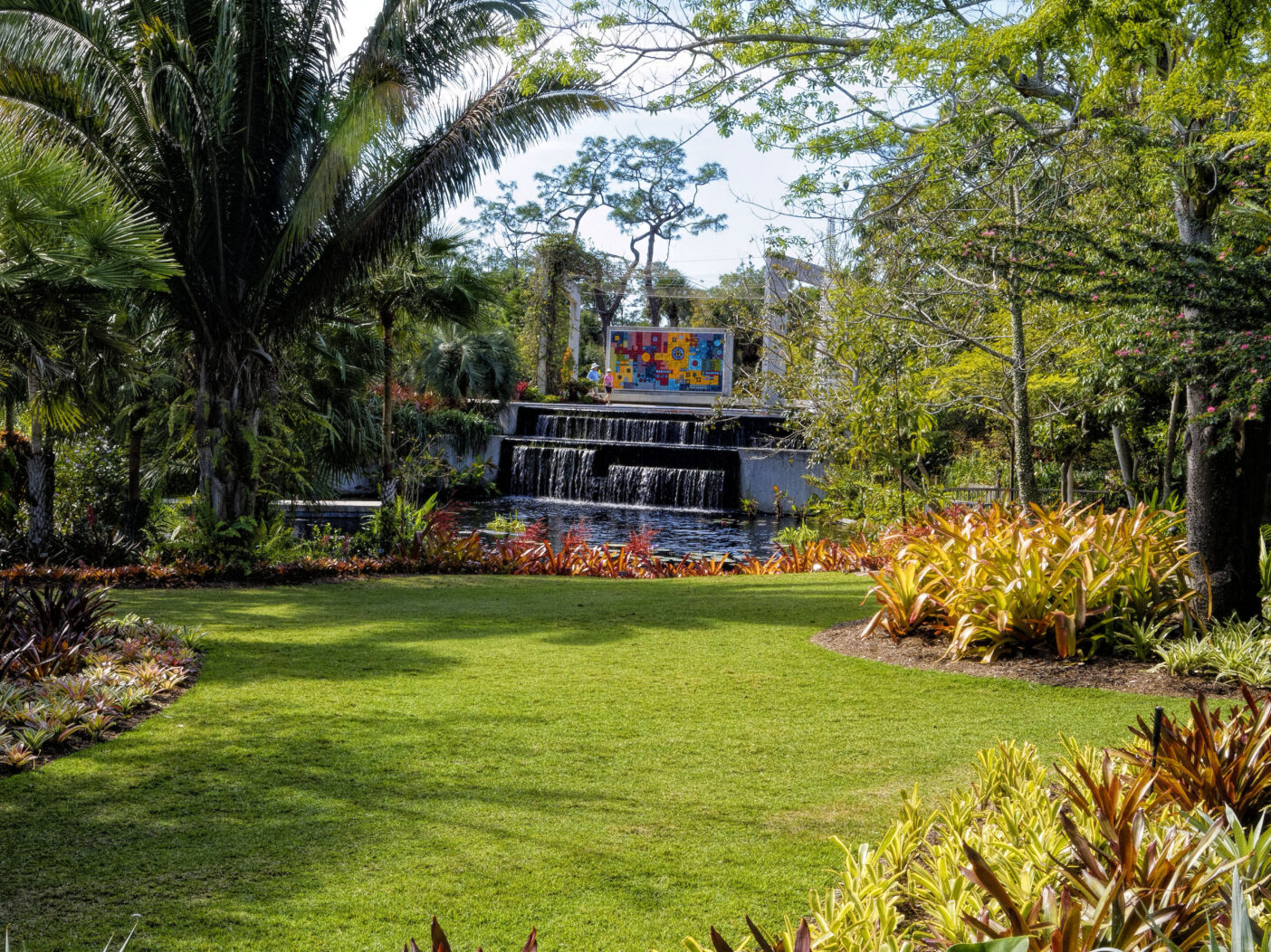
Move over, Pinterest!
This spring and summer, Garden horticulturists share their favorite plants and landscape design tips in a special series perfect for those who are eager to add pizzazz to their yards, and for homeowner associations looking to refresh community spaces.
These simple concepts, illustrated with photos from the Garden, are certain to inspire. With rainy season on the way, now is the perfect time to get planting.
Liz Chehayl, Brian Holley Curator of Collections
Liz’s Favorite Design Tips
- Use swaths of color. Especially for a plant collector like me, there may be many “onesies” (specimens) in a garden, but the use of multiples of one plant will create a flow and tie the landscape together.
- Raise some of your beds. A Florida landscape is naturally very flat. By building up berms of soil, you can add interest and actually create more square footage for planting. More area for more plants.
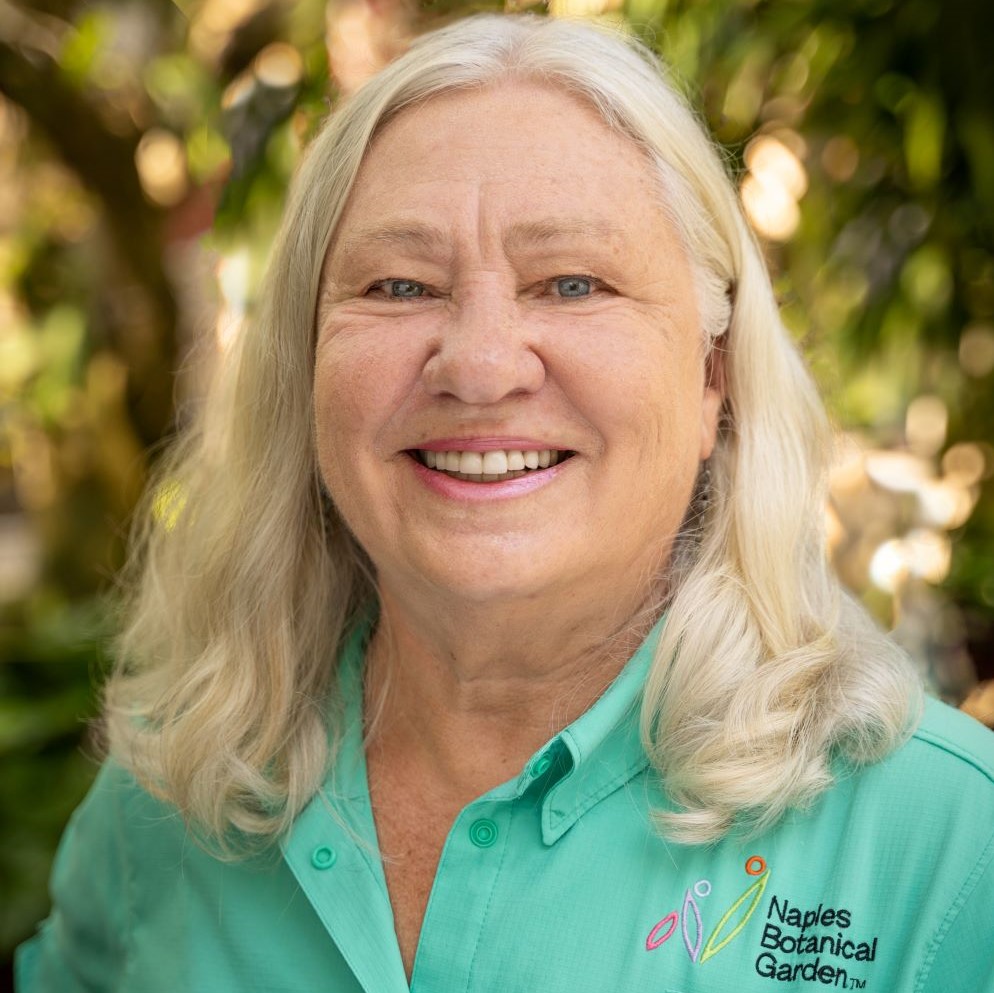
Liz’s Favorite Plants to Use
Lignum vitae (Guaiacum sanctum) is a small tree native to Florida. It is listed as “near threatened” on the International Union for Conservation of Nature Red List, but it is readily available commercially. Extremely slow growing, this tree is rarely larger than a few feet, but its clear blue flowers and orange fruit contrasted against the dark green foliage is striking. The small, winged fruit split open to reveal crimson seeds while still on the tree. Buy the largest one you can and plant it in a sunny, well-drained location. It flowers and fruits periodically throughout the year, but I also love the rounded shape of the canopy and the tiny, dark green leaves. The lignum vitae trees planted near the LaGrippe Orchid Garden entrance are about 30 years old and only 10 feet tall.
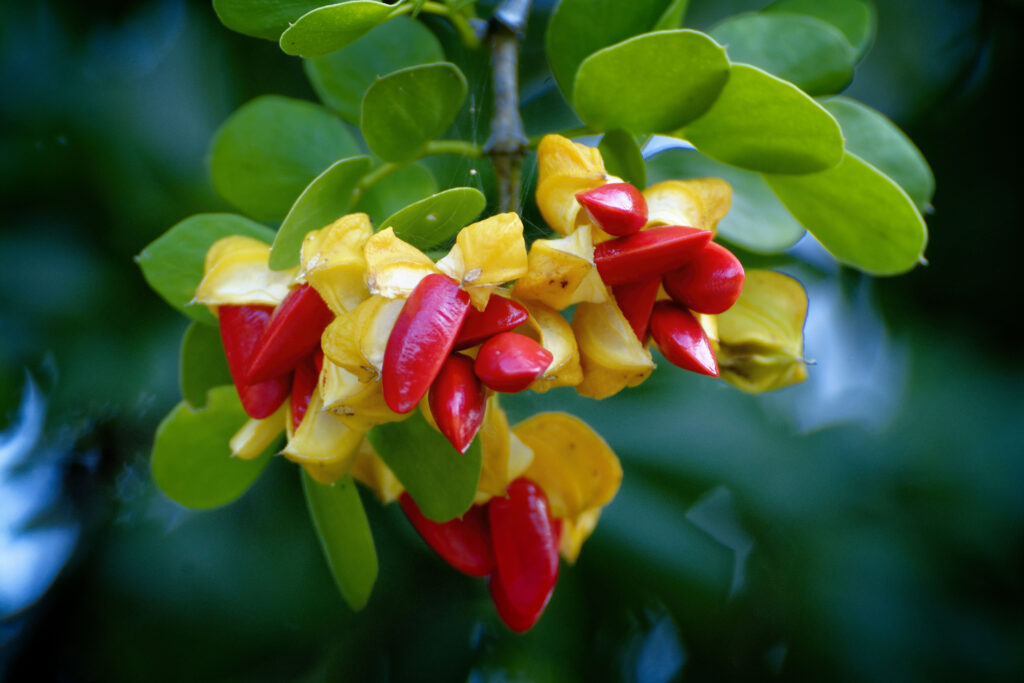
Begonia odorata ‘Alba’ is a mostly carefree shrub-like begonia that grows to a bushy 3 feet wide and tall. With white flowers held against glossy green leaves, it blooms for most of the year here in Southwest Florida. Plant it in partial to full shade in well-draining soil enriched with some organic matter. Its species name suggests that it is fragrant, but only to some people (not me). I’m not aware of a common name, but I’ve seen it referred to as White Angel on some websites. It’s well worth planting if, like me, you appreciate plants that take care of themselves. It does need watering, but your regular irrigation system should be fine.
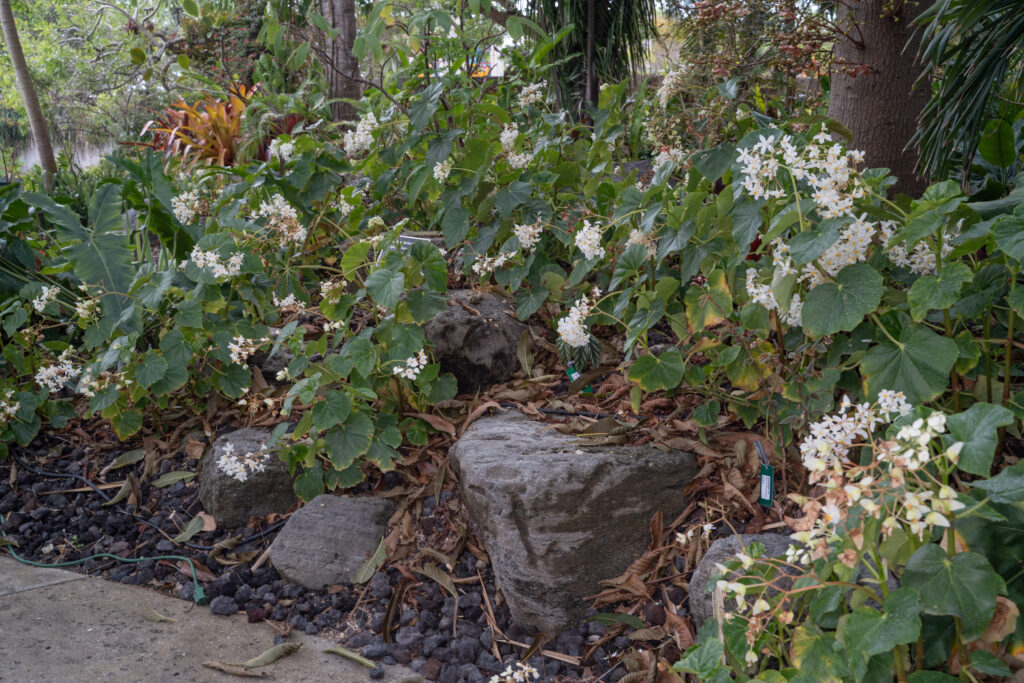
Putting it all Together
The Kapnick Brazilian Garden is planted in the manner of the famous landscape designer Roberto Burle Marx. Its architect, Raymond Jungles, specified curvy groupings of one plant to recreate the swaths of color Burle Marx was known for. This is especially apparent in the waves of yellow and red bromeliads that echo the colors in the Burle Marx mural that is the centerpiece of this garden.
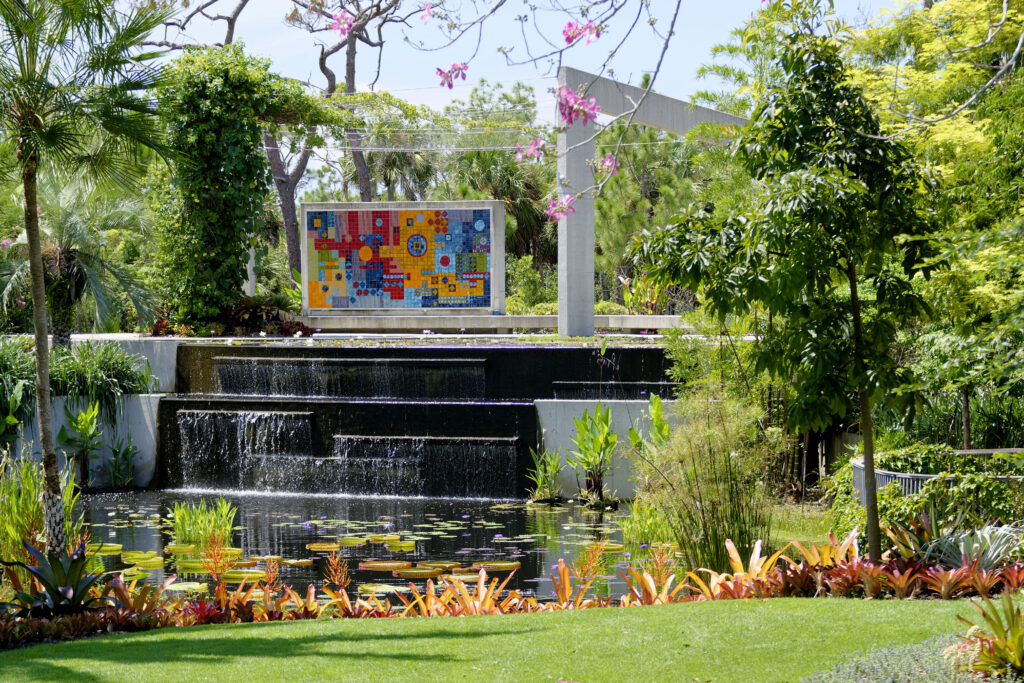
The beds of annuals in front of Kapnick Hall are favorites with our visitors. We can fit in many more flowers because the beds are bermed. The raised beds create dimension and allow for varying heights of plants.
